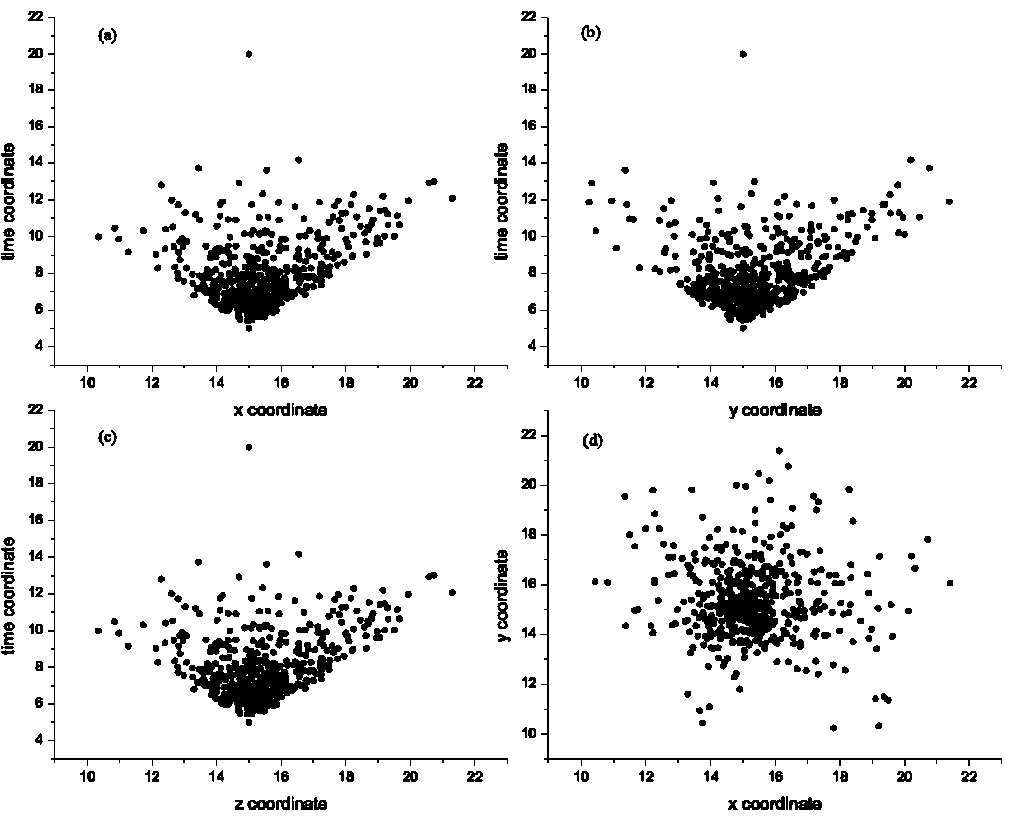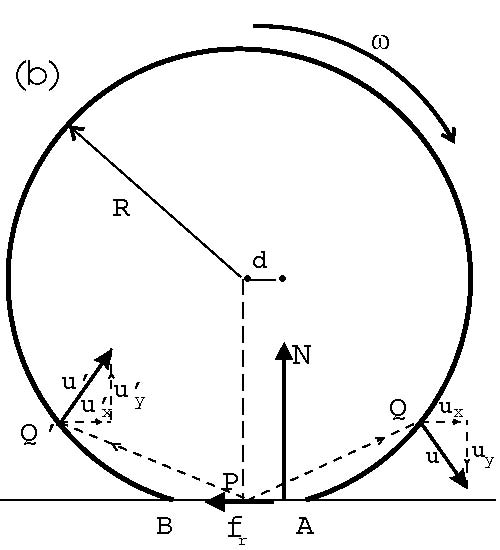
 |
David D. Reid |
Research Interests |
| My work is mostly, but not exclusively, computational and touches mainly on the areas highlighted below. In addition to those mentioned below I have a developing interest in quantitative biophysics, particularly, but not exclusively, theoretical neuroscience. |
 AIP Conf Proc 991, p. 5, Fig. 1
AIP Conf Proc 991, p. 5, Fig. 1 |
The causal set hypothesis supposes that the deep structure of spacetime is that of a locally finite partially ordered set. The set is locally finite because this model postulates that spacetime is discrete rather than continuous. The partial ordering - that some elements of the set have a specific relative order while others do not - provides the model with a built-in notion of causality. The ultimate goal is to use this construct as the foundation for a theory of quantum gravity in which spacetime is discrete. However, my own interest is in the interface between causal sets and classical gravity (general relativity), especially aspects of the Order + Number ⇒ Geometry correspondence that is one of its foundational concepts. |
|
There are many reasons to investigate the prospect that spacetime might be discrete. These reasons come from the study of black holes in classical gravity, certain aspects of quantum field theory, and many other considerations. For a discussion of some of these reasons see, Causal Sets: Discrete Gravity, by Rafael Sorkin. Many other introductory and review articles on causal sets are available. For one of the more recent ones see, The causal set approach to quantum gravity, by Sumati Surya. One of mine can be found here. Research projects currently in my plans include the following.
|
||||||
 Phys Rev A 70, 062714, Fig. 2 Phys Rev A 70, 062714, Fig. 2 |
The determination of quantum mechanical scattering cross sections continues to be a useful probe into the interactions of atoms and molecules. Cross sections are also important inputs for understanding transport phenomena in gases and other aspects of gaseous dynamics. In this work, conducted with J. M. Wadehra at Wayne State University, we seek to understand major (even global) trends in the interaction of electrons and positrons in atomic and molecular gases. Our current work focuses on electron and positron scattering from atoms in the alkali-earth group. |
|
Our calculations are performed using complex model interaction potentials. The model potential for polarization effects, which also (partially) takes into account correlation effects, was developed by us and introduced in this paper. Similarly, the model potential used for inelastic scattering of positrons was worked out by us and introduced here together with a key correction. Current and future work includes the following.
|
||||||
 EJP 20, p. 129, Fig. 2b EJP 20, p. 129, Fig. 2b |
I also work in physics pedagogy, which I distinguish from physics education research. By physics pedagogy I mean finding ways to explain certain (known) phenomena that are either more elucidating, more complete, more accurate, or just different (in some useful way) than the expositions typically found in textbooks. Current project ideas are related to the following.
|
|||||
|
||||||